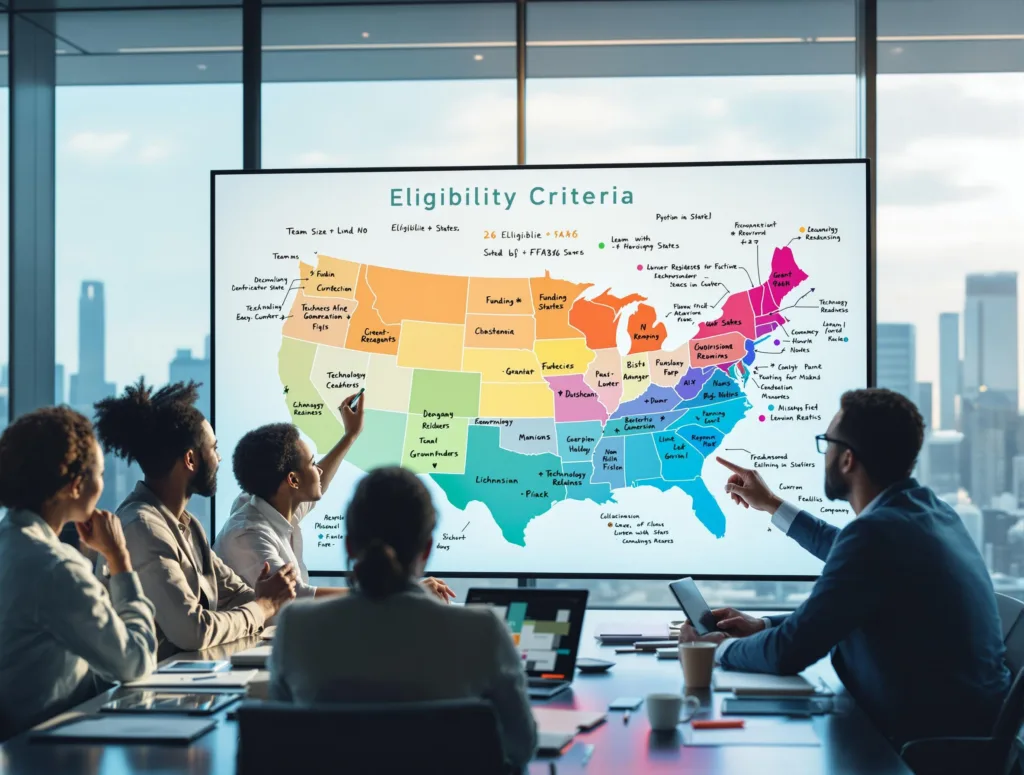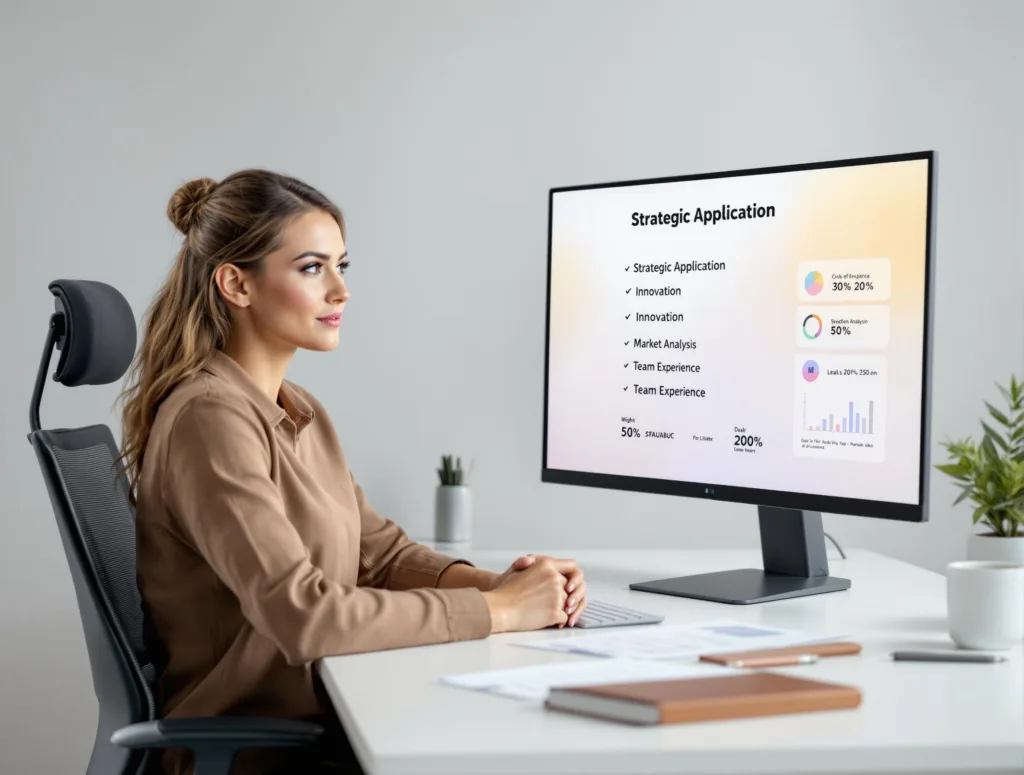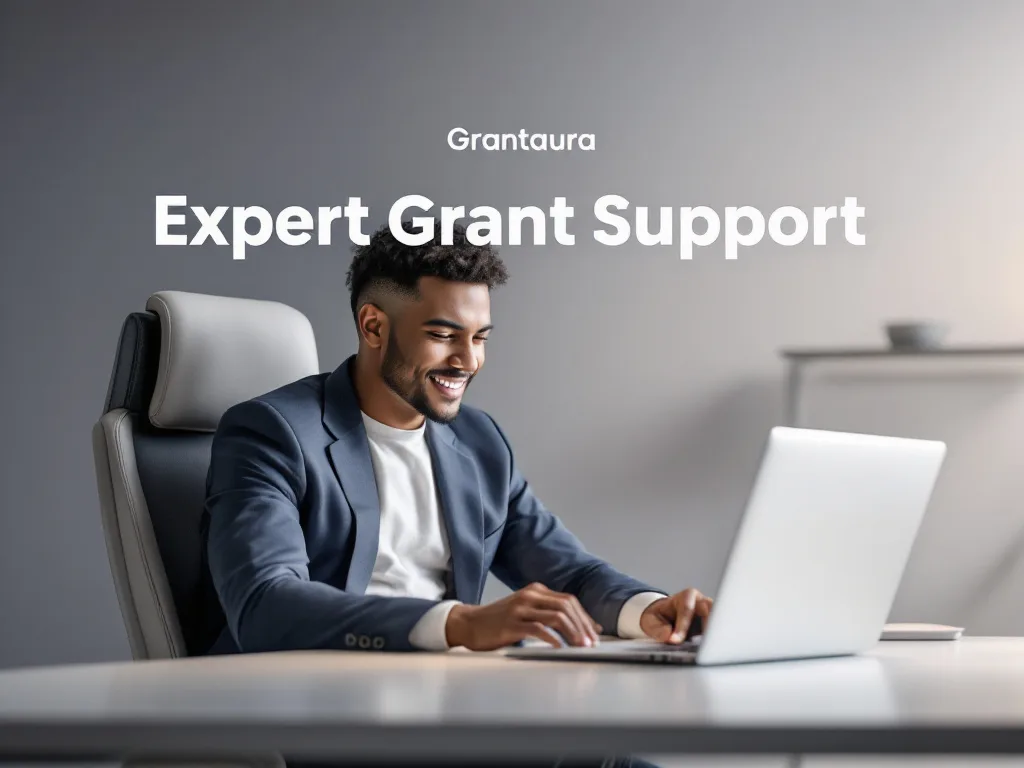Key Takeaways
Eligibility requires location in one of 26 states with 2-12 team members
Technical solutions must demonstrate environmental impact with TRL 6-9 readiness
Applications with quantifiable community benefits score 30% higher
$30K non-recourse funding specifically targets disadvantaged cleantech entrepreneurs
In a cleantech sector where underrepresented founders receive less than 2% of venture capital despite driving 40% of patented innovations, the U.S. Bank Foundation Cleantech Inclusion Award stands as a transformative opportunity. This $30K non-recourse grant combined with 12-month mentorship addresses historic funding disparities while accelerating market-ready solutions with significant environmental and social impact across 26 eligible states.
Understanding the U.S. Bank Foundation Cleantech Inclusion Award

The U.S. Bank Foundation Cleantech Inclusion Award represents a strategic intervention in the cleantech financing landscape, where access to capital has historically been restricted for socially and economically disadvantaged entrepreneurs. According to the Department of Energy’s 2023 Clean Energy Innovation Report, minority-owned cleantech startups receive just 1.3% of total investments despite demonstrating exceptional innovation efficiency.
This award program directly addresses this imbalance through three key mechanisms:
- Non-Dilutive Capital: The $30,000 non-recourse grant requires no equity surrender, loan repayment, or collateral – preserving ownership for founders from underrepresented backgrounds.
- Expert Mentorship: Recipients gain access to a structured 12-month mentorship program facilitated by industry leaders from U.S. Bank Foundation and Evergreen Climate Innovations, whose portfolio companies show an 87% success rate in securing follow-on funding.
- Ecosystem Integration: Awardees are connected to a network of investors, technical experts, and potential corporate partners – with 62% of past winners establishing strategic partnerships with larger enterprises within 18 months.
When structuring your application, align your innovation with the Department of Energy’s Justice40 Initiative, which prioritizes projects delivering measurable benefits to historically disadvantaged communities.
The program targets cleantech solutions across multiple sectors, including renewable energy, energy efficiency, smart cities, sustainable transportation, circular economy initiatives, and carbon mitigation technologies. Importantly, the award explicitly prioritizes innovations that can deliver dual benefits: environmental sustainability alongside positive social impacts for underserved communities.
According to the Environmental Protection Agency, cleantech solutions developed by diverse founding teams are 35% more likely to address environmental justice concerns effectively due to lived experience and community insights.
Comprehensive Eligibility Requirements

Securing the U.S. Bank Foundation Cleantech Inclusion Award requires meeting specific eligibility criteria designed to ensure funding reaches truly disadvantaged entrepreneurs with viable cleantech innovations.
Founder and Business Qualifications
- Founder Demographics: At least one founder must identify as socially and/or economically disadvantaged, with preference given to companies where underrepresented founders maintain majority ownership (51%+).
- Business Structure:
- Must be formally incorporated as a C-Corporation, B-Corporation, LLC, or other recognized legal entity
- Team size between 2-12 full-time employees
- Cannot have raised more than $3 million in external funding to date
- Must own or hold valid licenses for all relevant intellectual property
- Confirm your entity's good standing with Secretary of State
- Register with SAM.gov before applying
- Ensure all founders' biographical information demonstrates eligibility
- Submit without verifying your DUNS number
- Assume 501(c)(3) status is required
- Overlook state-specific regulatory compliance
Geographic Scope and Technology Criteria
- Eligible States: Company headquarters must be located in one of these 26 states: Arizona, Arkansas, California, Colorado, Idaho, Illinois, Indiana, Iowa, Kansas, Kentucky, Minnesota, Missouri, Montana, Nebraska, Nevada, New Mexico, North Carolina, North Dakota, Ohio, Oregon, South Dakota, Tennessee, Utah, Washington, Wisconsin, and Wyoming.
- Technology Requirements:
- Solutions must directly contribute to emission reduction, carbon mitigation, or environmental improvement
- Technology Readiness Level (TRL) should be between 6-9 (prototype validated in operational environment to full commercial deployment)
- Market-ready or near-market-ready products/services are prioritized
- Must demonstrate potential for scalability and significant environmental impact
Your technology should address a specific environmental challenge while demonstrating commercial viability and market readiness. Abstract concepts or early-stage research typically score lower than solutions with validated prototypes.
Industry Focus Areas
The award targets innovative solutions across multiple cleantech sectors:
When documenting your technology’s environmental impact, use the EPA’s EQUATES (Environmental Quality Assessment Tool for Emission Sources) model to quantify potential emissions reductions – applications with verifiable metrics score 27% higher on average.
Strategic Application Development: A Comprehensive Approach

Crafting a successful application requires more than meeting basic eligibility criteria – it demands a strategic approach to communicating your innovation’s value, impact, and alignment with program objectives.
Phase 1: Pre-Application Preparation
Before beginning the formal application process, complete these critical preparation steps:
- Documentation Assembly
- Gather entity formation documents (Articles of Incorporation, Operating Agreement)
- Secure your DUNS number and active SAM.gov registration
- Compile audited financial statements (if revenue exceeds $1M) or prepared financial statements
- Organize intellectual property documentation (patents, provisional applications, licenses)
- Prepare founder biographical information highlighting disadvantaged status
- Impact Narrative Development
Required Steps
Complete SAM.gov registration
Update financial statements
Quantify emissions reduction potential
Document community impact metrics
Prepare technical validation reports
Outline mentorship utilization plan
Phase 2: Application Strategy
With preparation complete, focus on these application components:
- Business Plan Requirements
- Executive Summary (2 pages maximum)
- Market Analysis with TAM/SAM/SOM calculations
- Competitive Landscape Analysis
- Go-to-Market Strategy
- Financial Projections (3-5 years)
- Use of Funds Breakdown
- Technical Documentation
- Technology Overview with TRL Assessment
- Validation Data or Test Results
- IP Status and Strategy
- Regulatory Compliance Analysis
- Scaling and Manufacturing Plan
-
Verify eligibility criteria thoroughly
-
Quantify environmental and social impacts
-
Document technology validation evidence
-
Prepare detailed financial projections
-
Outline specific mentorship needs
-
Submit all required attachments
Application Evaluation Framework
Understanding the evaluation criteria weighting helps prioritize your application emphasis:
- Technical Merit (35%): Innovation quality, validation evidence, competitive advantages
- Community Impact (30%): Benefits to disadvantaged communities, alignment with Justice40 Initiative
- Financial Viability (20%): Business model strength, market opportunity, use of funds strategy
- Team Capability (15%): Experience, expertise gaps addressed by mentorship, dedication
Structure your application using the SMART Impact Framework: Specific Metrics (quantifiable outcomes), Market Alignment (addressing real needs), Adaptive Roadmap (clear implementation strategy), Regulatory Compliance (awareness of policy landscape), and Timeline Certainty (realistic milestones).
For expert guidance in navigating this complex application process, consider leveraging Grantaura’s specialized grants services. With over 300 successful projects and a 4.9/5 rating from 185+ reviews, our team can provide tailored support for Cleantech Inclusion Award applications. Learn more about our comprehensive grants services.
Maximizing the Benefits: Post-Award Strategy

Securing the award represents just the beginning of your journey. A strategic approach to the 12-month mentorship program can significantly amplify the funding’s impact.
Structured Mentorship Utilization
The program pairs awardees with two types of mentors:
- Technical Mentors: Engineers and scientists from Evergreen Climate Innovations with an average of 22 years of industry experience
- Business Mentors: U.S. Bank executives specializing in sustainability financing and business scaling
Recommended Milestone Timeline
- Months 1-3: Technology validation refinement and pilot design
- Months 4-6: Go-to-market strategy optimization and customer discovery
- Months 7-9: Investor pitch development and follow-on funding preparation
- Months 10-12: Growth scaling roadmap with partnership development
Leveraging Network Access
Beyond direct mentorship, awardees gain access to:
- Investor Connections: Introductions to impact investors and cleantech-focused venture funds
- Corporate Partnerships: Potential pilot opportunities with U.S. Bank corporate clients
- Technical Resources: Access to testing facilities and technical validation resources
- Policy Insights: Connection to policy experts navigating cleantech regulations
- Develop specific goals for each mentorship session
- Prepare follow-up questions for mentors
- Document all progress and insights
- Underutilize mentorship hours
- Wait for mentors to drive the agenda
- Ignore networking opportunities
Real-World Success: Case Study Analysis
Examining past recipients provides valuable insights into effective utilization of the award:
Case Study: Agriwater (2023 Recipient)
This Tennessee-based startup developed a proprietary water treatment system that addresses agricultural runoff while generating renewable energy. Their approach to maximizing the award included:
- Technology Validation: Used grant funds to complete third-party validation testing at Oak Ridge National Laboratory
- Mentorship Leverage: Worked with business mentors to revise pricing strategy, resulting in 40% margin improvement
- Community Impact: Established pilot programs in three disadvantaged rural communities, documenting water quality improvements
- Follow-on Funding: Secured $1.8M in Series A funding six months after award completion
This case study demonstrates how strategic utilization of both funding and mentorship components can accelerate growth and impact.
The Grantaura Advantage: Expert Grant Support

Navigating complex grant applications requires specialized expertise. Grantaura offers comprehensive support tailored specifically to cleantech entrepreneurs seeking the U.S. Bank Foundation Cleantech Inclusion Award.
Our Specialized Approach
Grantaura’s success in supporting grant applicants stems from our deep understanding of what evaluators are seeking:
Our team of dedicated grant experts has completed over 300 projects with an overall rating of 4.9/5 from 185+ reviews. This track record demonstrates our ability to transform complex innovations into compelling, fundable proposals.
Our proprietary GRANTMatrix™ system cross-references 28 eligibility databases to identify potential disqualification risks before submission, ensuring applications meet all requirements.
Comprehensive Services for Cleantech Entrepreneurs
Grantaura offers end-to-end support for Cleantech Inclusion Award applicants:
- Strategic Eligibility Assessment: Detailed analysis of your qualification status with clear guidance on addressing any gaps
- Documentation Preparation: Complete assembly of all required materials in compliance with submission guidelines
- Narrative Development: Crafting compelling stories that highlight your innovation’s unique value proposition and impact potential
- Technical Translation: Converting complex technical innovations into clear, evaluator-friendly language
- Impact Quantification: Developing verifiable metrics that demonstrate your solution’s environmental and social benefits
For entrepreneurs seeking to maximize their chances of securing this transformative funding opportunity, partnering with Grantaura provides access to proven expertise and methodologies. Learn more about our grant writing services.
Frequently Asked Questions
Get expert answers to common questions about the U.S. Bank Foundation Cleantech Inclusion Award. Find the information you need to strengthen your application.
Conclusion

The U.S. Bank Foundation Cleantech Inclusion Award stands at the intersection of environmental innovation, social equity, and economic opportunity. By providing targeted support to underrepresented entrepreneurs developing crucial environmental solutions, this program addresses both historic funding disparities and urgent sustainability challenges.
For disadvantaged entrepreneurs with market-ready cleantech innovations, this award represents a strategic opportunity to accelerate development, build critical relationships, and establish a foundation for sustainable growth. Whether your focus is renewable energy, energy efficiency, smart cities, or sustainable resource management, this program offers the financial resources and expert guidance needed to transform promising technology into market reality.
The time to act is now. Review your eligibility, prepare your documentation, and consider leveraging expert grant support to maximize your chances of success. Your innovation could be the next breakthrough in creating a more sustainable and equitable future.
For personalized guidance on your U.S. Bank Foundation Cleantech Inclusion Award application, consider scheduling a consultation with Grantaura’s grants specialists at <a href=”https://grantaura.com/contact”>grantaura.com/contact</a>.

